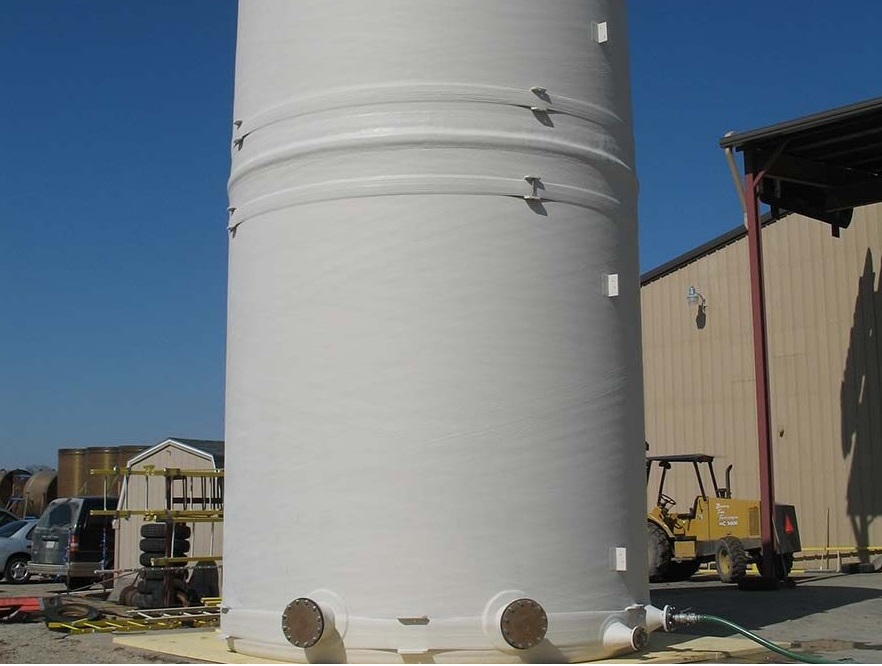Top Fittings and Accessories for Custom Fiberglass Tanks
Fiberglass tanks provide a corrosion-resistant solution for storing chemicals, water, and industrial liquids. While the tank shell forms the core...

Fiberglass tanks provide a corrosion-resistant solution for storing chemicals, water, and industrial liquids. While the tank shell forms the core structure, the proper functionality and adaptability of these systems come from the configuration of accessories and fittings. From manways and level sensors to heat tracing and access platforms, every component contributes to enhanced performance, improved safety, and streamlined maintenance.
Selecting the right fittings for custom fiberglass tanks depends on the type of contents, operational environment, and application-specific demands. This article breaks down the most widely used accessories that industrial users integrate with fiberglass chemical storage tanks to meet site and regulatory requirements.
Manways and Access Ports
Manways are among the most essential features of fiberglass tanks. These openings allow internal access for cleaning, inspection, or maintenance. Popular options include bolt-down and hinged manways, both of which are designed to provide a sealed entry while maintaining structural integrity.
Bolt-down manways are commonly installed at the top or sidewall of custom fiberglass tanks. Diameters vary, and tank users may request multiple manways on a single vessel depending on access needs. For confined spaces or tanks storing hazardous chemicals, selecting a manway with gasketed closures helps reduce the release of vapor emissions.
Some fiberglass chemical storage tanks also use inspection ports—a smaller, quick-access variant of the manway—for frequent internal checks without full entry. These are typically positioned on domed heads or sloped tops for gravity drainage alignment.
Sight Gauges and Level Sensors
Monitoring tank content levels helps prevent overflow, product loss, or damage to pumps due to dry running. Sight gauges offer a clear, mechanical method to view liquid levels from outside the tank. Made from corrosion-resistant tubing, these gauges run vertically along the sidewall and are connected at both the base and the top of the fiberglass tanks.
Electronic level sensors provide real-time monitoring and are often used in conjunction with alarms or automated filling systems. Ultrasonic, radar and pressure-based sensors can be installed directly into the tank head or through dedicated sensor ports.
In applications involving corrosive media, sensor housings are built using chemically compatible materials to protect internal electronics. These integrations are especially relevant in fiberglass chemical storage tanks, where process control depends on continuous and safe monitoring.
Ladder Systems and Access Platforms
Access systems are vital to safe tank operation and inspection. Fixed ladders, wraparound cages, and non-slip platforms enable technicians to reach domed tops or elevated ports without the need for external scaffolding.
When installed on custom fiberglass tanks, ladders must be mechanically isolated to prevent stress transfer into the tank wall. This typically involves bolting the ladder base to the concrete pad and attaching the upper brackets to reinforced zones on the tank body.
Access platforms are frequently requested for facilities where multiple tanks sit close together.
Modular walkways connect these fiberglass tanks, creating safe travel paths that are free from ground-level obstructions. OSHA and provincial safety standards govern the design of all such systems, including the height, railing dimensions, and anchoring methods.
Drainage Ports and Chemical Inlets
Tank drainage relies on strategically placed outlets that allow gravity-assisted emptying. Drain ports on fiberglass tanks are usually located at the lowest practical point of the floor—whether flat, sloped, or dish-bottom.
Nozzles must match both the chemical compatibility and pressure expectations of the stored fluid. In fiberglass chemical storage tanks, resin selection, and reinforcement thickness are customized to meet these factors. Threaded, flanged, or stub-end fittings connect with external piping and are independently supported to avoid strain on the tank wall.
Chemical inlets enable the manual addition of new products or the transfer of existing ones via pumps. Inlet locations vary based on tank geometry, process integration, and specific agitation requirements. Splash fill-inlets, anti-foam tubes, and spray balls are all common accessory types, especially in mixing environments.
Mixers and Agitation Components
Mixers are installed on fiberglass tanks to maintain product homogeneity, prevent sedimentation, or trigger chemical reactions. Mounting configurations include top-entry, side-entry, and external recirculation loops.
Agitators must be matched to tank volume and product viscosity. For example, custom fiberglass tanks used in polymer processing may require variable-speed mixers, whereas water storage tanks typically only require light circulation.
Reinforced mounting plates and internal baffles help stabilize the mixer shaft and prevent wall deformation. All associated penetrations must be sealed and tested for leak protection under dynamic stress conditions.
Heat Tracing and Insulation
Temperature control in fiberglass chemical storage tanks protects product integrity and simplifies transfer during colder months. Heat tracing involves electrical or fluid-filled coils installed on the tank exterior, typically under a thermal insulation wrap.
Both self-regulating and constant-wattage heat trace cables are used, depending on the chemical’s freeze point and allowable temperature range. For tanks containing sensitive or exothermic fluids, the heating setup includes thermostats and cut-off switches.
Fiberglass as a material offers some inherent insulation, but additional jackets, spray-on foam, or layered wraps are often applied to maintain specific temperature conditions. This is particularly common in agricultural or food processing environments that utilize corrosion-resistant fiberglass tanks for storing fertilizers or syrups.
Customization and Tank-Specific Configuration
No two installations share the exact same operating conditions. That is why custom fiberglass tanks are designed with site layout, chemical specifications, and regulatory inputs from the start. Accessories are not aftermarket add-ons—they’re integrated into the tank’s structural drawings and fabrication process.
Each fiberglass tank drawing accounts for the following:
- Mounting orientation of each nozzle, manway, or sensor
- Restraint systems based on wind/seismic factors
- Interior lining requirements for chemical compatibility
- Lifting lugs or skirt designs for vertical/horizontal handling
By coordinating these accessories during the engineering phase, corrosion-resistant fiberglass tanks deliver better functionality and fewer retrofitting issues after installation.
In Conclusion
Accessory selection influences not just tank usability but operational safety and maintenance schedules. Manways, sight gauges, heat trace systems, and sensor ports all require careful planning for designing the tank. Access platforms, drain lines, and mixing equipment further
increase the performance of custom fiberglass tanks in industrial environments.
Belding Tank Technologies provides engineered accessories for a wide range of fiberglass storage tanks, ensuring that each project meets the demands of chemical compatibility, user access, and long-term usage. Contact Belding Tank Technologies to request detailed drawings or discuss accessory integration for any upcoming project.





